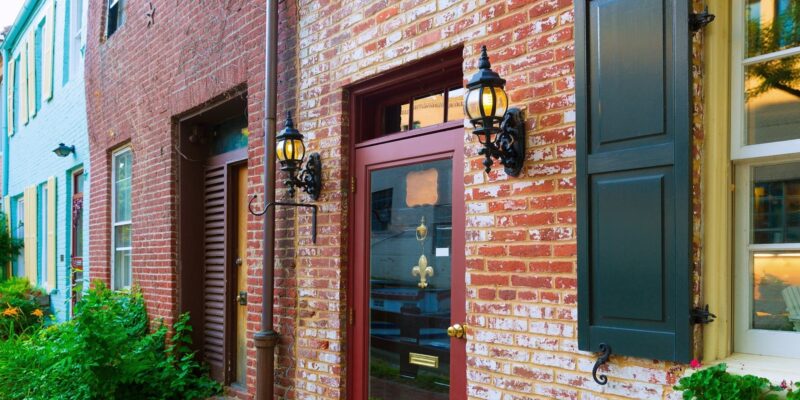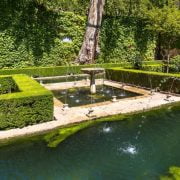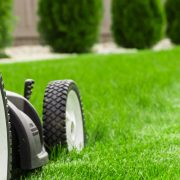Brick, over the course of centuries, has remained a favorite material for home construction. Its visual appeal, insulation benefits, and exceptional durability make it stand out. Interestingly, if well-kept, brick edifices can outlive their creators by multiple centuries, as evidenced by the oldest brick residence in the United States, constructed in the 17th century.
However, it’s important to note that brick is not maintenance-free despite its renowned durability and longevity. It requires upkeep to maintain the structural soundness of your home. Preventive maintenance protects your brick home from environmental factors, averting pricey damages and future repairs. Here’s a summary of the maintenance measures you should adopt to help your brick home withstand the test of time and serve generations.
Repair and Inspect
Keeping a brick house in good condition necessitates yearly inspections. Bricks are not usually the source of damage, but rather, the mortar binds them together. Clean the brickwork with water and examine for any signs of deteriorating mortar. If any damaged mortar is spotted, it should be instantly fixed with new mortar to avoid water leakage.
Additionally, if your home is situated in an area with minimal or no sunlight, you should be vigilant for moss, mold, or mildew signs. A synthetic scrub brush combined with household bleach and water solution can effectively eliminate most of these undesired growths.
Eliminate Mold and Get Rid of Efflorescence
While molds or mildew can be conveniently handled by applying a water and bleach solution and scrubbing the area with a sponge, dealing with efflorescence is different. Efflorescence is a whitish, powdery substance that can appear on brick walls due to natural salt deposits left behind when water evaporates from the brick’s pores. As water is the catalyst for efflorescence, it’s best to use a dry bristle brush for its removal. However, sandblasting may be considered a last resort when the brush is ineffective.
Clear Out Your Weep Holes
Maintaining a brick house involves taking care of its weep holes, small openings in the mortar that serve an important purpose. They help drain out moisture, averting flood risks, and also boost ventilation to keep mold and mildew at bay. Over time, though, these weep holes may get blocked, posing a risk of moisture damage.
To avoid this, regular inspection of your weep holes is necessary. Look for any visible obstructions. If you spot any, use compressed air or a wire piece to clear them out. A good way to check if they’re still blocked is by running water from your garden hose through the weep holes. If the water flows steadily and clearly, you’re good. However, if it doesn’t, there’s likely a blockage somewhere that needs to be cleared to ensure proper drainage.
Apply Sealant to Shield Your Brickwork
Safeguarding your brick house from water damage is crucial, particularly during winter. This is due to the potential risk of water infiltrating into the brick’s crevices and expanding when it freezes, leading to increased damage over time.
Sealant offers a reliable solution for this problem. It shields your bricks from water damage and guards against possible oil stains, especially on driveways, and UV rays that can fade your house’s beautiful stonework.
Polyurethane sealant, suitable for filling brick or stone cracks, is available in a 10-ounce tube and costs around $8. A gallon of siloxane sealer is recommended for undamaged stone and brick, although it can be pricier at over $80. These sealants are easily found in hardware stores. However, applying sealant might require expertise to ensure no area is missed, exposing the wall to further damage. Therefore, if you lack previous experience, click here for professional help.
Wash Your Bricks Using a Gentle Soap
Maintaining the pristine look of your brick house is easier than you might think. Even though it may appear clean from afar, up close you may notice grime, debris, or budding stains. The good news is, bricks are relatively easy to spruce up, as long as you use the right tools and cleaning solutions.
Avoid harsh chemicals that could spoil the natural charm of your brickwork. The secret to clean bricks is simply using a synthetic or natural brush and a gentle detergent mixed with water. Ensure you steer clear of wire brushes, which can leave behind steel fragments that may rust and cause your bricks to discolor.
Even though you may be tempted to clean more often if you spot efflorescence or discoloration, it’s advisable to clean your exterior masonry at least once a year. This simple tip can help keep your brick house looking its best year-round.
Restore Old Stone or Brickwork
When maintaining a brick house, you may encounter aging stone or brickwork that’s showing signs of wear and tear. These includes:
- Falling stones
- Crumbling
- Significant cracks
In these cases, a basic polyurethane sealant won’t do the trick. Instead, resort to repointing the mortar, a process that involves removing the old, weakened mortar and replacing it with new one.
The cost of repointing can vary, typically ranging from $500 to $2,500 for an average task, as stated by HomeAdvisor. If there’s a necessity to repoint an entire wall rather than a small section, the costs might increase.
Because repointing is a labor-intensive task requiring specific knowledge about different types of mortar, hiring a professional mason is recommended. For instance, older homes (over 50 years old) generally use lime-based mortar, which is incompatible with the Portland cement mortar used in most contemporary homes. However, the effort and cost can be justified since a proper repointing job can endure anywhere from 20 to over 50 years, providing a long-term solution for maintaining your brick house.
Swap Out Broken Bricks
Begin by carving out the mortar around the damaged bricks for replacement. Thoroughly cleanse the gap and apply a bonding agent or water to moisten it. Distribute fresh mortar at the gap’s base, then position the brick and apply mortar to its sides and top. To finish off the new joints, you can just glide your fingers over the fresh mortar to even out any rough spots and wipe away any leftover residue.
Endnote
The significance of preserving the charm of a brick house through suitable preventive maintenance cannot be overstated. By adhering to the aforementioned measures, you can maintain the aesthetic appeal of your home for many years and avoid expensive repair work down the line.








Comments